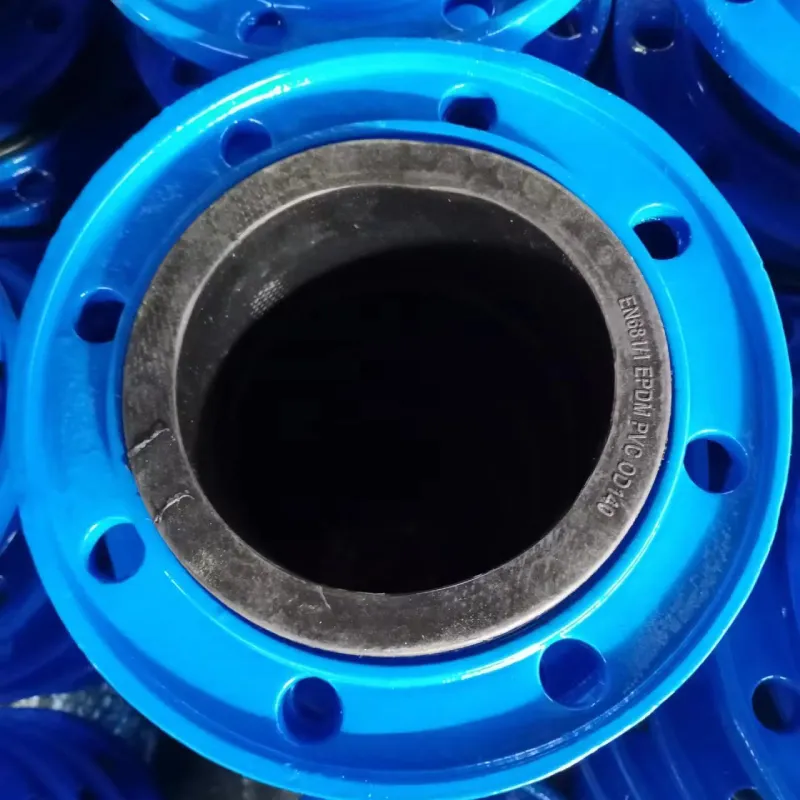Cast Iron Wafer Design Butterfly Valve for Optimal Flow Control and Durability
The Cast Iron Wafer Type Butterfly Valve An Overview
The cast iron wafer type butterfly valve is an essential component in various industries, especially where efficient fluid control is paramount. This type of valve is best known for its robust construction, reliability, and versatility, making it a popular choice for applications in water treatment, HVAC systems, and other industrial processes.
Construction and Design
The cast iron butterfly valve is primarily made from durable cast iron, which provides excellent strength and corrosion resistance. This material is particularly beneficial in environments where the valve may be exposed to moisture and harsh chemicals. The wafer design of the valve allows it to be installed between two flanges in a pipeline, making it an ideal solution for tight spaces and systems with limited access.
The valve consists of a circular disc (the butterfly) that rotates around a central shaft. When the disc is parallel to the flow direction, the valve is in the open position, allowing for maximum fluid passage. Conversely, when the disc is perpendicular to the flow, the valve is closed, effectively stopping the fluid flow. This simple yet effective design facilitates quick and efficient operation, which is one of the reasons why butterfly valves are preferred in many installations.
Advantages of Cast Iron Wafer Type Butterfly Valves
1. Compactness and Lightweight Compared to other valve types, the wafer design is compact and lightweight, which simplifies installation and reduces the structural support required for pipes.
.
2. Cost-Effective Due to their material and design, cast iron wafer type butterfly valves tend to be more affordable than other types, making them an attractive option for budget-conscious projects without sacrificing quality.
cast iron wafer type butterfly valve

3. Minimal Pressure Drop The disc's design allows for a low profile in the flow path, resulting in minimal pressure drop when the valve is in the open position. This is crucial for maintaining the efficiency of fluid systems.
4. Versatility These valves can be used in various applications, including water supply systems, wastewater treatment, chemical processing, and HVAC systems. Their adaptability to different media is a significant advantage.
5. Ease of Operation The quarter-turn operation of butterfly valves ensures that they can be operated quickly and with minimal effort, which is particularly useful in emergency situations where rapid response is necessary.
Applications
The cast iron wafer type butterfly valve is used extensively across several sectors. In municipal water systems, these valves control the flow of drinking water, ensuring safe and consistent delivery. In industrial environments, they manage the flow of chemicals, slurries, and other liquids, facilitating efficient processing and handling.
Moreover, in HVAC systems, these valves regulate airflow, enhancing energy efficiency and comfort in residential and commercial buildings. Their ability to withstand changes in temperature and pressure makes them ideal for such dynamic systems.
Conclusion
In summary, the cast iron wafer type butterfly valve stands out for its durability, cost-effectiveness, and operational efficiency. Its simple design belies its critical role in fluid control across myriad applications, from managing municipal water supplies to facilitating complex industrial processes. As industries continue to evolve, the reliance on dependable components like the cast iron wafer type butterfly valve will remain a cornerstone of effective fluid management strategies. With an increasing focus on sustainability and efficiency, these valves will likely play an even more significant role in future infrastructure developments.
-
The Smarter Choice for Pedestrian AreasNewsJun.30,2025
-
The Gold Standard in Round Drain CoversNewsJun.30,2025
-
The Gold Standard in Manhole Cover SystemsNewsJun.30,2025
-
Superior Drainage Solutions with Premium Gully GratesNewsJun.30,2025
-
Superior Drainage Solutions for Global InfrastructureNewsJun.30,2025
-
Square Manhole Solutions for Modern InfrastructureNewsJun.30,2025
-
Premium Manhole Covers for Modern InfrastructureNewsJun.30,2025
